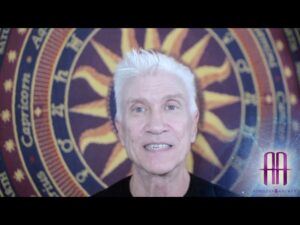The Moon holds special reverence in Astrology. As important as all the planets in Astrology may be, the Moon holds special significance across historical magical traditions, dates, festivals, and magical workings. There are aspects of human consciousness that resonate to the primeval energies of the Moon, that our remote ancestors were aware of. There are certain dates and times that are crucial for invoking the Moon’s divine feminine energy and the accompanying Goddesses.
The Wheel of the Year Festivals and Lunar Astrology
In lunar Astrology, the Modern Pagan festivals that form the Wheel of the Year all correspond with the Moon in some way. Here are the eight festivals, also known as the Sabbats, and their corresponding dates:
Yule, Winter Solstice- December 19th-22nd
Imbolc, Oimelc, Candlemas- January 31st– February 1st
Ostara, Spring Equinox- March 19th-22nd
Beltaine, May Day- April 31st– May 1st
Litha, Alban Heruin, Summer Solstice- June 19th– June 22nd
Lughnasadh, Lammas- July 31st– August 1st
Mabon, Autumn Equinox- September 19th-22nd
Samhain, Halloween- October 31st– November 1st
The Phases of the Moon in Lunar Astrology
Working with magical correspondences in Lunar Astrology successfully has to do with the working with the appropriate phases of the Moon. The waxing Moon can be an ideal time to do a spell for growth or new projects. The waning Moon is a suitable time for banishing spells, removing obstacles and illnesses, and neutralizing enemies. The Black Moon is when the Moon seems to disappear, when it is in the process of the waning phase from Full Moon to New Moon. During this time, the Moon starts to grow once again towards fullness.
Three days after the New Moon is the most potent time for manifestation work, which should come to completion by the Full Moon. The days just before the Full Moon are the most powerful times for fruition. It is best to consult a lunar Astrology calendar for the exact time of the Full Moon. This is due to the fact that the Moon can often appear full for two or three nights but be in the waning phase.
Hours, Days, and Planetary Correspondences in Lunar Astrology
Further fine tuning your spell and ritual work can be done by considering daylight hours and hours of darkness. The planet that rules the day also rules the first hour after sunrise. The succeeding hours of daylight are controlled by the other planets in the following order: The Sun, Venus, Mercury, The Moon, Saturn, Jupiter, and Mars.
There is a different order at sunset. The first hour after sunset is ruled by the planet fifth in line from the day’s own planet. Here is a look at the correspondences:
· The first hour after sunset on a Sunday is ruled by Jupiter.
· The first hour after sunset on a Monday is ruled by Venus.
· The first hour after sunset on a Tuesday is ruled by Saturn.
· The first hour after sunset on a Wednesday is ruled by the Sun.
· The first hour after sunset on a Thursday is ruled by the Moon.
· The first hour after sunset on a Friday is ruled by Mars.
· The first hour after sunset on a Saturday is ruled by Mercury.




